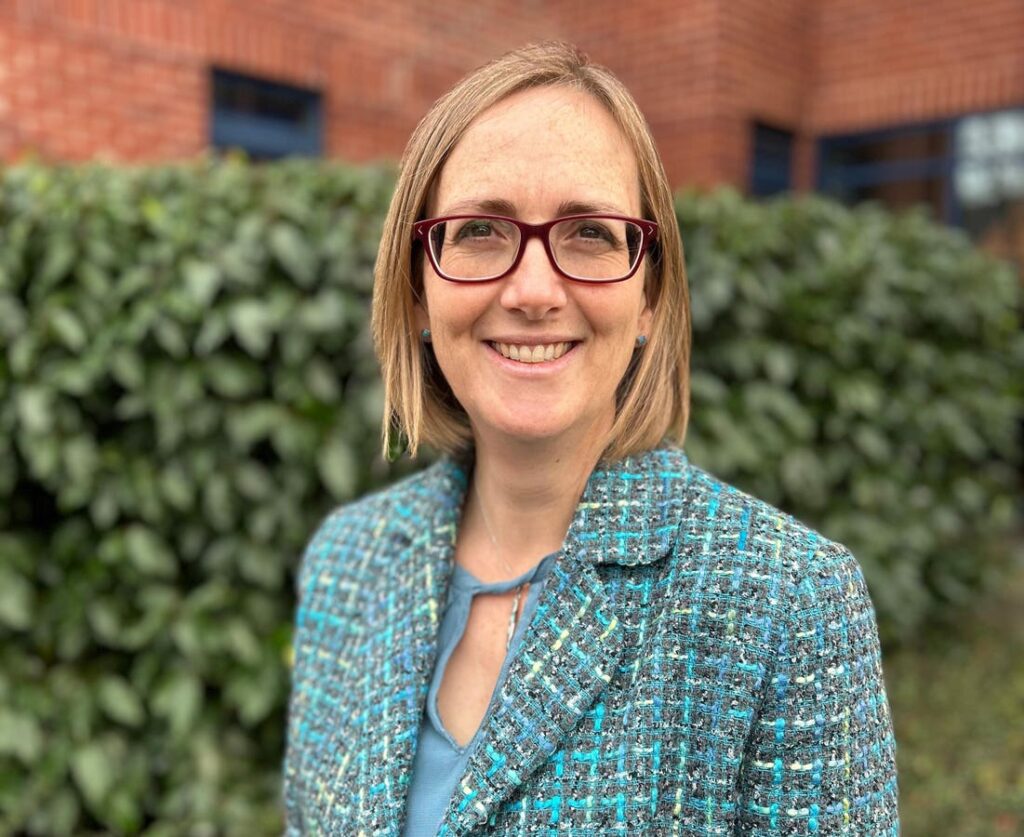Marie Gibbs, CEO of Oxford University Innovation
Oxford University Innovation
Celebrating the first reasonably warm weather of the British summer, the University of Oxford this week hosted around 50 local and international investors on a tour of the city, visited the nearby Science and Innovation Campus, and met face-to-face with spinout companies. That may not seem particularly unusual, but in this case the focus was on emerging deep tech startups, reflecting the need to attract capital to a sector of the innovation economy rife with both opportunity and investor risk.
Organised by Oxford University Innovation's (OUI) Office of Technology Transfer, the event was designed to draw attention to areas such as quantum computing, climate tech, AI, space and energy, whilst reminding the investor community of the wider community of research-based businesses operating in the city and the surrounding region. When I spoke to OUI CEO Mhairi Gibbs and the university's Vice-Chancellor, Professor Chas Bountla, I was keen to hear more about the challenges of spinning out deep technologies into commercial markets.
On the surface, Oxford should face fewer challenges than other universities: Along with Cambridge, it sits at the top of the UK university system and, as Gibbs highlights, there is already a large and established startup ecosystem in the region.
“We have an incredible ecosystem,” she says, “with around 3,000 innovative companies in the region and around 300 spin-out companies.” All of this is underpinned by infrastructure including the Harwell Innovation Campus, a collaboration between government, industry and universities with the aim of accelerating research into key technologies.
The Challenges of Translational Finance
But the challenges associated with shepherding new technologies along the path from laboratory research to working products and ultimately commercial success are common to all universities. And as Gibbs acknowledges, funding remains an ongoing struggle.
“One of the challenges we have is a lack of funding,” she said, adding that access to translational funding is particularly important for spinout companies.
This is the funding researchers need to start their journey to commercialise their research findings before incorporation, and before moving on to seed, Series A and beyond. The need for this kind of funding was recognised by the UK government last year in response to an independent report on spin-outs, with Chancellor of the Exchequer Jeremy Hunt announcing a £20 million fund. Gibbs says more money is needed if policymakers' desire to make the UK a science powerhouse is to be realised.
“That's welcome, but it's never enough,” she says. “The University of Oxford alone receives over 300 invention disclosures per year, far more than it has funding to support proof of concept. Publicly available data shows that in 2022-2023 alone, there will be 3,600 invention disclosures at universities across the UK. £20 million is barely enough for an opportunity of that scale.”
Gibbs argues that more government investment and partnerships with companies are needed.
Universities have their own funds to support spin-outs: for example, the University of Oxford offers grants of up to £250,000 to researchers through the University Challenge Seed Fund. Though relatively small, this funding contributes to the creation of 40 percent of university spin-outs.
Beyond that, seed, Series A and growth capital will always be needed, and universities are trying to bring together a large group of active investors for this week's event. Since 2010, university spin-out companies have raised £2.5bn in external funding, 10 of which have listed in London or New York. But Bountla says increasing capital flows is an ongoing policy priority. “We want to attract more investors,” he says.
Identifying Use Cases
As well as helping with funding, Oxford University Innovation aims to play an active role in helping researchers identify use cases for the technology.
“Sometimes it's easy,” she says, “you develop a malaria vaccine in the lab and the application is obvious. But it's not always obvious. It's often an iterative process.”
She gives the example of self-driving car software company Oxa: “You might think the obvious market would be cars, but it's a tricky market,” she says. “In fact, their technology is being used in transit pods at a Florida airport.”
So how do companies find use cases in areas like quantum and AI, where the research is fairly niche and commercial applications aren't immediately in sight? Gibbs says it's partly a matter of going out and talking to potential customers. The university's alumni — people with successful entrepreneurial backgrounds themselves — are happy to pitch in, and this process of payback is formalized. “Oxford has entrepreneurs at its disposal,” Gibbs says. Investor days and presentation sessions also provide an opportunity for potential backers to feed back their ideas to aspiring entrepreneurs.
UK universities are keen to commercialise the intellectual property developed in their labs, but the UK has historically struggled to keep up with the scale of company creation seen at US universities. At a policy level, there is growing pressure to ensure the UK does not miss out on the benefits of AI, quantum and the science that will deliver cleaner energy. For universities, even the most prestigious, increasing investment and funding is an ongoing battle.



